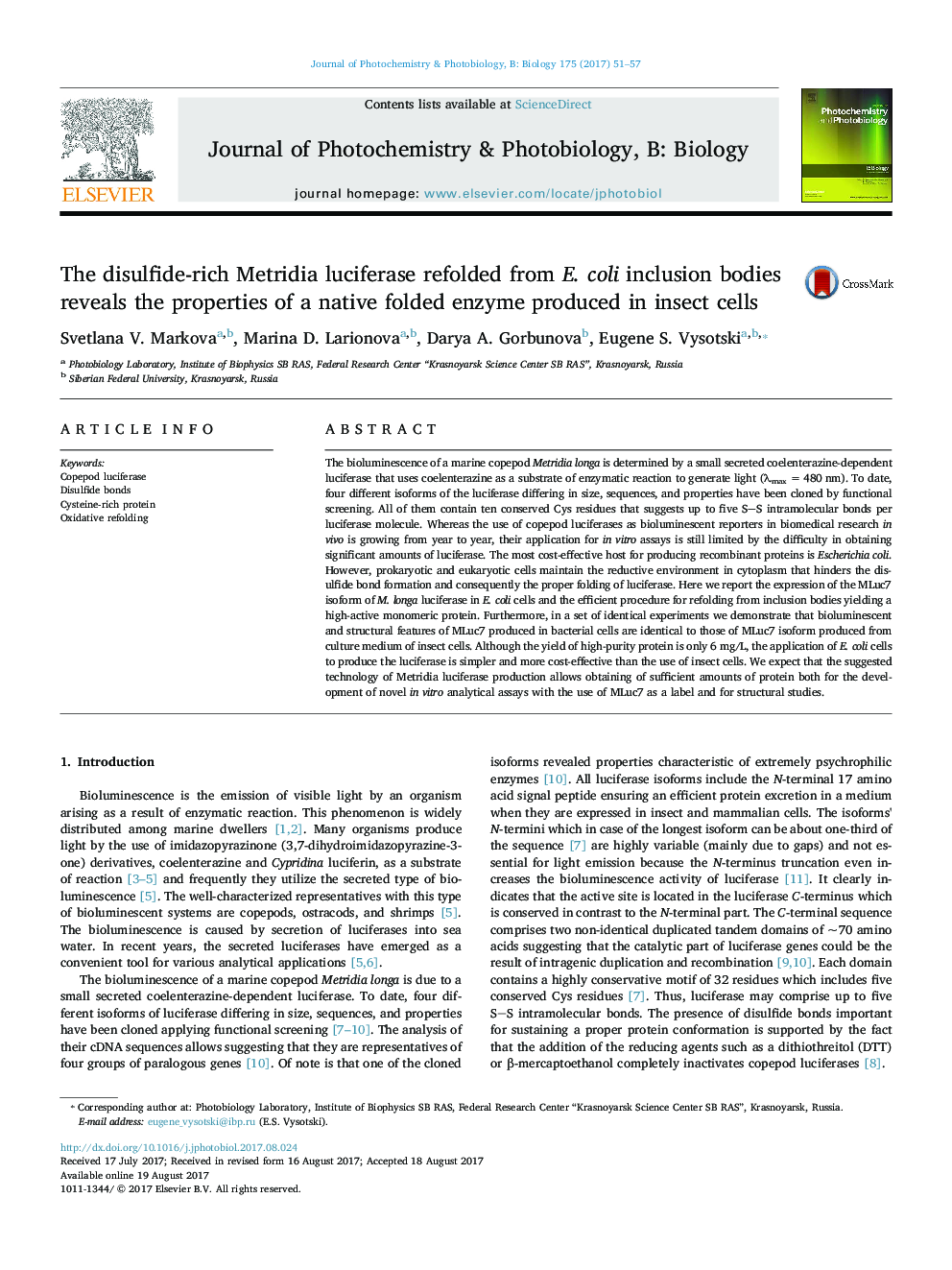| کد مقاله | کد نشریه | سال انتشار | مقاله انگلیسی | نسخه تمام متن |
|---|---|---|---|---|
| 6452506 | 1418058 | 2017 | 7 صفحه PDF | دانلود رایگان |

- Conditions to refold a disulfide-rich MLuc7 from E. coli inclusion bodies were found.
- Native folded monomeric protein of high purity was produced with yield of 6Â mg/L.
- Refolded MLuc7 was compared with native folded MLuc7 secreted by insect cells.
- Properties of both Metridia luciferase samples revealed no significant differences.
The bioluminescence of a marine copepod Metridia longa is determined by a small secreted coelenterazine-dependent luciferase that uses coelenterazine as a substrate of enzymatic reaction to generate light (λmax = 480 nm). To date, four different isoforms of the luciferase differing in size, sequences, and properties have been cloned by functional screening. All of them contain ten conserved Cys residues that suggests up to five SS intramolecular bonds per luciferase molecule. Whereas the use of copepod luciferases as bioluminescent reporters in biomedical research in vivo is growing from year to year, their application for in vitro assays is still limited by the difficulty in obtaining significant amounts of luciferase. The most cost-effective host for producing recombinant proteins is Escherichia coli. However, prokaryotic and eukaryotic cells maintain the reductive environment in cytoplasm that hinders the disulfide bond formation and consequently the proper folding of luciferase. Here we report the expression of the MLuc7 isoform of M. longa luciferase in E. coli cells and the efficient procedure for refolding from inclusion bodies yielding a high-active monomeric protein. Furthermore, in a set of identical experiments we demonstrate that bioluminescent and structural features of MLuc7 produced in bacterial cells are identical to those of MLuc7 isoform produced from culture medium of insect cells. Although the yield of high-purity protein is only 6 mg/L, the application of E. coli cells to produce the luciferase is simpler and more cost-effective than the use of insect cells. We expect that the suggested technology of Metridia luciferase production allows obtaining of sufficient amounts of protein both for the development of novel in vitro analytical assays with the use of MLuc7 as a label and for structural studies.
Graphical Abstract349
Journal: Journal of Photochemistry and Photobiology B: Biology - Volume 175, October 2017, Pages 51-57